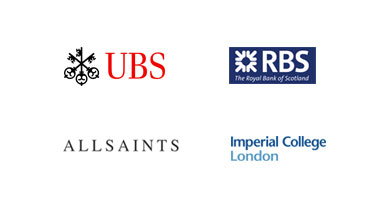MCITP Enterprise Admin 2008
Synopsis
- 8 Days Fast Track (10.00-18.00) or 10 Weeks 6 Hours Per Week Training
- Course Fee: £1325 + VAT
- Industry Expert and Certified Instructors
- Training Venue: Central London Location
- Tutor Led Classroom Training
Request Brochure
Course Information

MCITP Enterprise Administrator Training Course
The Microsoft Certified IT Professional Enterprise Administrator (Server 08) program develops and enhances a professional's knowledge and skills on Microsoft server technologies which is a big asset to the company and to the individual himself. It also aims to develop the individual's configuration skills and prepares him for actual problems that might occur in the real environment. The total hands-on step by step training course prepares you for the worldwide recognized Microsoft MCITP EA certification.
London Training offer MCITP Training which is Tutor Led in Classroom environment with Industry Expert and Microsoft Certified Trainers to equip you with the skills to enable you achieve the MCITP Certification.
Career prospect
Microsoft Network Engineer, Network Administrator, System Engineer, Support Engineer, Network Architect.
Learning Facilities
We have immaculate learning facilities with state of art technology, fully equipped with high specs latest servers, workstations and software.
General Facilities
We also provide Free Wifi Internet, Refreshment, Water, Tea and Coffee Facilities.
Registration Process
Speak with Course Advisor Call 0207 256 7722
Course Highlights
MCITP Enterprise Admin 2008
- 70-640 - Windows Server 2008 Active Directory
- 70-642 - Windows Server 2008 Network Infrastructure
- 70-643 - Windows Server 2008 Applications Infrastructure Configuration
- 70-680 - Windows 7, Configuring
- 70-647- Windows Server 2008, Enterprise Administrator

Course Fee: £1325 + VAT
- Hands-on Tutor Led Training
- Classroom Based Practical Training
- Unlimited Practice Lab Access
- Small Size Class and Interactive Sessions
- Lab Exercises
- Project Work
- WiFi Internet
- Refreshments
- Completion Certificate
- Free Re-training
- The course fee excludes VAT


Pay Monthly.
Interest Free Installments Upto 1 Year.
Contact
Course Syllabus
Exam 70-640 Windows Server 2008 Active Directory, Configuring
DNS for Active Directory
- Configure zones. DNS, DDNS, NDDNS, SDDNS
- Primary, Secondary, Active Directory Integrated,
- Stub, SOA, zone scavenging, forward lookup, reverse lookup
DNS server settings.
- Forwarding, root hints, configure zone delegation, round robin.
- Zone transfers and replication, Name Servers
Active Directory Infrastructure, Domain Trusts and Active Directory Sites
- Forest or a domain.
- Active Directory Migration, Remove a domain, unattended installation,
- Raise forest and domain functional levels,
- (UPN) suffix, forestprep, domainprep,
- Forest trust, transitive trust, external trust, Active Directory subnets, configure site links, configure site link costing, configure sites infrastructure
Active Directory Replication.
- Distributed File System, one-way replication, Bridgehead server, replication scheduling, configure replication protocols, force inter site replication
Configure the global catalog, operations masters, Additional Active Directory Server Roles
- Universal Group Membership Caching (UGMC), partial attribute set, promote to global catalog, Seize and transfer, backup operations master, operations master placement
Active Directory AD LDS, AD RMS, RODC, AD FS
- Migration to AD LDS, configure data within AD LDS,
- configure an authentication server, server core, Windows Server 2008 Hyper-V
- Active Directory Rights Management Service(AD RMS), Windows Server virtualization, Metadirectory Services (AD MDS) , read-only domain controller(RODC), BitLocker, syskey, credential caching, Unidirectional replication, AD FS server role, exchange certificate with AD FS agents
Active Directory Objects
- Automate creation of AD accounts.
- Bulk import, configure the UPN, create computer,
- user, and group accounts (scripts, import, migration),
- template accounts, contacts, distribution lists
Maintain Active Directory accounts.
- Configure group membership, account resets, delegation,
- AGDLP/AGGUDLP, deny domain local group, local versus domain,
- Protected Admin, disabling accounts versus deleting accounts,
- deprovisioning, contacts, creating organizational units (OUs), delegation of control
Create and apply Group Policy objects (GPOs), GPO templates
- OU hierarchy, block inheritance, and enabling user objects,
- group policy processing priority, WMI, group policy filtering, group policy loopback
- User rights, ADMX Central Store, administrative templates, assigning software to users, assigning to computers, software removal,
Configure account policies and audit policy by using GPOs
- Domain password policy, account lockout policy,
- fine-grain password policies, Audit logon events, audit account logon events, audit access privilege
Active Directory Environment
- Backup, recovery and offline maintenance
- Windows Server Backup, back up files and system state data to media,
- back up and restore, an authoritative or non-authoritative Active Directory restore,
- Directory Services Recovery Mode (DSRM) (reset admin password), back up and restore GPOs
- Offline defragmentation and compaction, Restartable Active Directory
Monitor Active Directory.
- Network Monitor, Task Manager, Event Viewer,
- ReplMon, RepAdmin, Windows System Resource Manager,
- Reliability and Performance Monitor, Server Performance Advisor, RSOP
Active Directory Certificate Services
- Install Active Directory Certificate Services.
- Standalone, enterprise, CA hierarchies—root versus subordinate,
- certificate requests, certificate practice statement, Configure CA server settings
- Key archival, certificate database backup and restore, assigning administration roles,
- Certificate template types, key recovery agent
Manage enrolments and certificate revocations.
- Network device enrollment service (NDES), Autoenrollment,
- Web enrollment, smart card enrollment, creating enrollment agents, Configure Online Responders,
- Certificate Revocation List (CRL), CRL Distribution Point (CDP), Authority Information Access (AIA)
Exam 70-642 Windows Server 2008 Network Infrastructure, Configuring
Configuring IP Addressing and Services
- IPv4 and IPv6 addressing.
- Configure IP options, subnetting, supernetting, alternative configuration, Dynamic Host Configuration Protocol (DHCP). DHCP options, creating new options, PXE boot, default user profiles, DHCP relay agents, exclusions, authorize server in Active Directory, scopes, server core, Windows Server Hyper-V
Configure routing and IPsec.
- Static routing, persistent routing, Routing Internet Protocol (RIP), Open Shortest Path First (OSPF)
- IPsec policy, IPsec Authentication Header (AH), IPsec Encapsulating Security Payload (ESP)
Domain Name System (DNS) server.
- Conditional forwarding, external forwarders, root hints, cache-only, server core, WINS and DNS integration, Windows Server virtualization, Configure DNS zones, DNS listserv address (NSLOOKUP), primary/secondary zones, Active Directory integration, Dynamic Domain Name System (DDNS), GlobalNames, SOA refresh, Configure DNS records.
- Record types, host, pointer, MX, SRV, NS, dynamic updates, Time to Live (TTL)
DNS replication.
- DNS secondary zones, DNS stub zones, DNS scavenging interval, replication scope
Configure name resolution for client computers.
- DNS and WINS integration, configuring HOSTS file, LMHOSTS, node type, Link-Local Multicast Name Resolution (LLMNR), broadcasting, resolver cache, DNS Server list, Suffix Search order, manage client settings by using group policy
Network Access - Configure remote access and Network Access Protection(NAP).
- Dial-up, Remote Access Policy Overview, Network Address Translation (NAT), Internet Connection Sharing (ICS), VPN, Routing and Remote Access Services (RRAS), inbound/outbound filters, configure Remote Authentication Dial-In User Service (RADIUS) server, configure RADIUS proxy, remote access protocols, Connection Manager, Network layer protection, DHCP enforcement, VPN enforcement, configure NAP health policies, IPsec enforcement, 802.1x enforcement, flexible host isolation
Network authentication.
- LAN authentication by using NTLMv2 and Kerberos, WLAN authentication by using 802.1x, RAS authentication by using MS-CHAP, MS-CHAP v2, and EAP
Wireless access.
- Set Service Identifier (SSID), Wired Equivalent Privacy (WEP), Wi-Fi Protected Access (WPA), Wi-Fi Protected Access 2 (WPA2), ad hoc versus infrastructure mode, group policy for wireless
Firewall settings.
- Incoming and outgoing traffic filtering, Active Directory account integration, identify ports and protocols, Microsoft Windows Firewall versus Windows Firewall with Advanced Security, configure firewall by using group policy, isolation policy
File and Print Services
- Configure a file server. File share publishing, Offline Files, share permissions, NTFS permissions, encrypting file system (EFS)
Distributed File System (DFS).
- DFS namespace, DFS configuration and application, creating and configuring targets, DFS replication
Shadow copy services, backup and restore.
- Recover previous versions, set schedule, set storage locations
- Backup types, backup schedules, managing remotely, restoring data
- Manage disk quotas. Quota by volume or quota by user, quota entries, quota templates
Print services.
- Printer share, publish printers to Active Directory, printer permissions, deploy printer connections, install printer drivers, export and import print queues and printer settings, add counters to Reliability and Performance Monitor to monitor print servers, print pooling, print priority
Monitoring and Managing a Network Infrastructure
- Configure Windows Server Update Services (WSUS) server settings.
- update type selection, client settings, Group Policy object (GPO), client targeting, software updates, test and approval, disconnected networks
Capture performance data.
- Data Collector Sets, Performance Monitor, Reliability Monitor, monitoring System Stability Index
Monitor event logs.
- Custom views, application and services logs, subscriptions, DNS log
- Gather network data.
- Simple Network Management Protocol (SNMP), Baseline Security Analyzer, Network Monitor
Exam 70-643 Windows Server 2008 Applications Infrastructure, Configuring
Deploying Servers
- Deploy images by using Windows Deployment Services.
- Install from media (IFM), configure Windows Deployment Services, capture Windows Deployment Services images, deploy Windows Deployment Services images, server core,
- Configure Microsoft Windows activation, install a KMS server, create a DNS SRV record, replicate volume license data
Windows Server Hyper-V and virtual machines
- Virtual networking, virtualization hardware requirements, Virtual Hard Disks, migrate from physical to virtual, VM additions, backup, optimization, server core
High availability
- failover clustering, Network Load Balancing, hardware redundancy
Storage
- RAID types, Virtual Disk Specification (VDS) API, Network Attached Storage, iSCSI and Fibre Channel storage area networks, mount points
Configuring Terminal Services
- Configure Windows Server 2008 Terminal Services RemoteApp (TS RemoteApp).
- Configuring Terminal Services Web Access, Terminal Services Remote Desktop Web Connection
Terminal Services Gateway
- Certificate configuration, Terminal Services Gateway Manager (TS Gateway Manager), specifying resources that users can access through TS Gateway by using Terminal Services resource authorization policy (TS RAP) and Terminal Services connection authorization policy (TS CAP), Terminal Services group policy
Terminal Services load balancing.
- Terminal Services Session Broker redirection modes, DNS registration, setting through group policy
Terminal Services resources
- Allocate resources by using Windows Server Resource Manager, configure application logging
Terminal Services licensing
- Deploy licensing server, connectivity between terminal servers and Terminal Services licensing server, recovering Terminal Services licensing server, managing Terminal Services client access licenses (TS CALs)
Terminal Services client connections
- Connecting local devices and resources to a session, Terminal Services profiles, Terminal Services home folders, Remote Desktop Connection (RDC), single sign-on, Remote Desktop Snap-In, MSTSC.exe
Terminal Services server options
- Logoff, disconnect, reset, remote control, monitor, Remote Desktop Protocol (RDP) permissions, connection limits, session time limits, managing by using GPOs, viewing processes, session permissions, display data prioritization
Configuring a Web Services Infrastructure
Web applications
- Directory-dependent, publishing, URL-specified configuration, Microsoft .NET components, for example, .NET and aspx, configure application pools
Manage Web sites
- Migrate sites and Web applications, publish IIS Web sites, configure virtual directories
File Transfer Protocol (FTP) server
- Configure for extranet users and permissions
Simple Mail Transfer Protocol (SMTP)
- Setting up smart hosts, configuring size limitations, setting up security and authentication to the delivering server, creating proper service accounts, authentication, SMTP relay
Manage Internet Information Services (IIS)
- Web site content backup and restore, IIS configuration backup, monitor IIS, configure logging, delegation of administrative rights
SSL security
- Configure certificates, requesting SSL certificate, renewing SSL certificate, exporting and importing certificates
Web site authentication and permissions
- Configure site permissions and authentication, configure application permissions, client certificate mappings
Network Application Services
- Configure Windows Media server.
- on-demand replication, configure time-sensitive content, caching and proxy
Digital Rights Management (DRM)
- Encryption, sharing business rules, configuring license delivery, configuring policy templates
Microsoft Windows SharePoint Services server options
- Site permissions, backup, antivirus, configuring Windows SharePoint Services service accounts
Windows SharePoint Services e-mail integration
- Configuring a document library to receive e-mail, configuring incoming versus outgoing e-mail
Exam 70-680 Windows 7, Configuring
Installing Windows 7
- Introduction, Installing Windows 7 Using Image-Based Installation, Migrating User Settings, sysprep, image for deployment, Capture the image and copy to a network share, Image Using ImageX, disk and image the new computer, Migrate User Settings
Configure Hardware and Software
- Configure Devices, Configure Application Compatibility, Add a printer, printer properties, device driver details, Configure Device Manager, Configure Application Compatibility, Application Restrictions, Restrict application execution using AppLocker, Configure Internet Explorer using Group Policy
Configure the Network
- Configure General Network Settings, Managing Wireless Networks, Sharing Resources, Configure TCP/IP, Troubleshooting Network Connectivity, Configure Windows Firewall, Configure Remote Management, Create a network map
Configure TCP/IP Settings
- Configure Static IPv4 Settings, Configure IPv4 for Dynamic IP Addressing, Configure IPv6 Addressing, Configure TCP/IP settings using IPV4 and IPv6, Using PING, ipconfig, tracert, nslookup, Configure Windows Firewall, Configure Remote Management, Configure Remote Desktop
Sharing and Securing Resources
- Configure Shared Resources, HomeGroup Settings, User Account Control (UAC), BranchCache, Shared Folders in Computer Management, Share a printer, UAC Group Policy Settings, Account Policies, Configure NTFS Permissions and View Effective Permissions, Credential Manager Vault
Windows 7 and Mobile Computing
- Configure BitLocker and BitLocker ToGo, DirectAccess, Mobility Options, Configure Offline Files, Manage Offline File Settings, Configure Remote Connections, BitLocker
Monitoring and Maintaining Windows 7
- Configure Updates, Manage Disks, Monitor Systems, Configure Performance Settings, Windows Updates, Automatic Updates, Configure Windows Update using Group Policy,
Manage Disks
- Create Disk Volumes, Extend a Volume, Shrink, and Delete Volumes, Extend Partitions Across Disks (Spanned Volumes), Convert a Disk to Dynamic, Create a VHD, diskpart, Defragment a Drive
Monitor Systems and Configure Performance Settings
- Configure the Event Log Settings, Clear and Archive Logs, Filter Event Logs and Create Custom Views, Configure Page File settings, Configure Drive Caching, Configure Power Settings, Adjust Performance Settings
Backup and Recovery
- Configure Backup, Configuring System Recovery Options, Backup the computer, Modify a backup schedule, Restore a backup, Configure System Restore Points, Configure System Recovery, Restore the Computer to a Previous State, Configure File Recovery Options, Create a File and Restore Point, Configuring System Recovery Options
Exam 70-647 Windows Server 2008, Enterprise Administrator
- Planning Network and Application Services
Plan for name resolution and IP addressing.
- Internal and external naming strategy, naming resolution support for legacy clients,
- Naming resolution for directory services, IP addressing scheme, TCP/IP version coexistence
Design for network access.
- Network access policies, remote access strategy,
- Perimeter networks, server and domain isolation
Plan for application delivery.
- Application virtualization, presentation virtualization,
- Locally installed software, Web-based applications
Plan for Terminal Services.
- Terminal Services licensing, Terminal Services infrastructure
Designing Core Identity and Access Management Components
Design Active Directory forests and domains.
- Forest structure, forest and domain functional levels,
- Intra-organizational authorization and authentication, schema modifications
Design the Active Directory physical topology and administrative model.
- Placement of servers, site and replication topology,
- Printer location policies, Delegation, group strategy, compliance auditing,
- Group administration, organizational structure
Design the enterprise-level group policy strategy.
- Group policy hierarchy and scope filtering, control device installation, Authentication and authorization
Designing Support Identity and Access Management Components
- Plan for domain or forest migration, upgrade, and restructuring.
- Cross-forest authentication, backward compatibility, object migration,
- Migration planning, implementation planning, environment preparation
Design the branch office deployment.
- Authentication strategy, server security
Design and implement public key infrastructure.
- Certificate services, PKI operations and maintenance,
- Certificate life cycle management
Plan for interoperability.
- Inter-organizational authorization and authentication, Application authentication interoperability, cross-platform interoperability
Designing for Business Continuity and Data Availability
- Plan for business continuity. Service availability, directory service recovery
Design for software updates and compliance management.
- Patch management and patch management compliance, Microsoft Update and Windows Update, security baselines, system health models
Design the operating system virtualization strategy.
- Server consolidation, application compatibility, Virtualization management, placement of servers
Design for data management and data access.
- Data collaboration, security, accessibility and redundancy
What Our Customers says

MCITP Enterprise Admin 2008 Package Offer: Great Savings!!!
Time Table and Pricing
Training Facilities










Training And Certification



Why Choose London Training ?
- Authorized Training Center
- Hands-on Training
- Tutor Led Classroom
- Small Class Size 5-7 max
- Central London Locations
- Expert and Certified Trainers
- Price includes Tuition Fee, Classroom Training and Course Material
- Expert and Certified Trainers
- Classes on Week Days, Evening or Weekends
- Free Re-training
- Modern Training Facilities
- Inclusive Books / Materials
- Mock Exams / Projects





